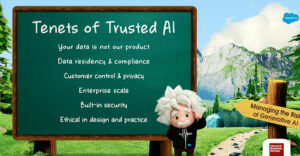Apple made a bold move on the customer support front this summer: The company started publishing customer support videos for its Beats by Dre headphones via the product line’s Twitter account.
The strategy is notable primarily because Apple published how-to videos natively on Twitter, taking a proactive approach to deflect service calls and ensure user satisfaction. The company is adjusting to the technological evolution, reaching customers via a platform with a user base that likely tracks closely with its products’ target customers.
Apple’s strategy is also newsworthy because it’s an example of turning a traditional customer support delivery model on its head. Companies usually dictate the terms of the support transaction, giving customers a toll-free number, chat window, portal or email address, and providing support only via the prescribed platforms.
Apple now is seeking out customers on Twitter to deliver a short tutorial via native video, pushing support out instead of pulling customers in to access information.
As social media tools change the way people communicate, it’s likely that other companies will adopt a similar strategy, enabling support via platforms like Twitter if not proactively using native video to head off customer support calls.
For companies that deliver business-to-business support, it’s important to remember that business customers are also consumers. They are immersed in the same highly personalized, social media-driven culture that is changing customer expectations on the business-to-consumer side and prompting innovations like Apple’s native video on Twitter campaign.
Variety of Options
How can companies that serve other businesses keep up? One way is to offer customers a variety of channels for support. People like having choices, and the main objective should be to provide support via the channel customers prefer, and get them back to using the product or service as quickly as possible.
A robust self-service option is a must: Often, the quickest way to resolve an issue is to give customers a way to find answers themselves. How-to videos, FAQs, knowledge bases and user community portals are a great way to help customers find their own answers. Self-service resources are also an excellent way to deflect simple support calls so agents can focus on resolving more complex issues.
Companies that serve other businesses also can expand their use of video, screen recordings and screen shots in the issue-resolution process. If a picture is worth a thousand words, then the value of a recording that illustrates the exact issue the customer is experiencing is worth even more.
With the right B2B support platform, customers can embed screen shots, screen recordings and video recordings directly into the trouble ticket, and agents can respond with a video of their own (with optional narrative) to show customers how to fix the problem.
Many hardware and software support organizations have used the video approach successfully, and it has the added benefit of strengthening the relationship between support agents and their customers. Putting a face with a name forms a more personal connection, and customers typically are grateful to have screen and video recording features that eliminate the need to write out a lengthy description of a problem.
Collaboration and Personalization
One thing all of these approaches to delivering service have in common is that they are far more effective in enabling collaboration. It’s smart to give customers access to a variety of support channels, but it’s crucial to make sure that all support agents, as well as other staff, have access to the same database of customer information.
This approach mirrors the personalization trend in consumer commercial transactions. Customers expect the companies they deal with to know their purchase and service history, along with their contact preferences. A well-designed support platform eliminates the need to pass customers across multiple tiers, and leverages the supporting company’s collective expertise.
Apple’s bold move on customer support probably will find many imitators as other companies reach out to customers via video delivered natively on preferred social media platforms. Companies that provide support to business customers also are evolving their approach to meet rising demand for information across multiple channels.
An omnichannel approach that takes customer preferences into account, provides self-service options, and uses embedded video and screen recording functions to deliver support can be highly effective with B2B customers.
A platform that supports all of these options and also enables collaboration can help companies manage individual contact relationships and the business relationship overall. That’s how B2B customer support is evolving in the digital age.


















































Social CRM
See all Social CRM